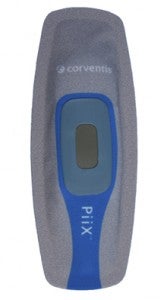When we have to act fast, today’s technology puts critical real-time information right at our fingertips. Weather updates on your cell phone can send you running for shelter moments before a downpour. Getting a free barbecue grill can depend on being the first reply to that Craigslist ad. Your friend just saw Vin Diesel at a Starbucks? Run, man! Run!

More importantly (to most of us, anyhow), this ease of communication is revolutionizing how health care functions. If our doctors have instant access and updates on the state of our bodies, they can respond more quickly to an impending crisis. We’ve previously reported on body 2.0 and health monitor technology; here, we look at two new technologies that keep your doc up to date on your biological data stream. They just might save your life.
Usually, the first sign that you’re having a heart attack is the pain in your chest. What if it was the sound of your heart monitor beeping, and your doctor was immediately alerted the second it went off? The company Corventis is marketing their FDA-approved heart sensor, PiiX, a 15-centimeter patch that applied directly to the patient’s chest. It measures real-time heart rate, body temperature, physical activity, body position, respiration rate, and body fluid levels – all of which can show early signs of heart failure before it happens. Think of it like Twitter for your organs.
When a patient wears the sensor, it transmits this data to a small portable device that’s comparable to a cell phone, easily kept in the patient’s pocket or around the house. This device wirelessly transmits your body’s state of affairs to Corventis’ servers, which automatically (and constantly) run algorithms to detect any abnormalities. The company also forwards your biodata directly to your doctor, whether on the web or to his mobile device. You can actually interrupt his Caesar salad with your heart attack. Not to mention the PiiX is waterproof… Did somebody say pool party?
Critically, this type of remote monitoring can catch early signs and prevent heart failure in the first place (the number one killer in the US). Over a million heart attacks per year – costing billions of dollars – is a tremendous strain on our health care system. Early detection, if it becomes widespread, would lift a significant portion of this burden, saving both lives and money in the long run. Corventis’ work has recently focused on the heart, but they are working on broader cardiovascular monitoring that might soon predict the occurrence of stroke or other blood flow failures. Maybe they can even work in a little audio recording that reminds you to go to the gym once in a while.
But real-time biostats won’t just help you get to the hospital in time; they’ll increase your quality of care once you’re there. Triage Wireless is a company developing a way to vastly improve the efficiency and quality of your in-patient health care. Triage Wireless is creating a monitoring platform to keep your doctors and nurses up to date on your vital signs, no matter where you are in the hospital.
Also featuring on-the-body sensors, the company’s Rapid Response Monitor ViSi feeds real-time vitals – heart rate, temperature, etc. – to remote monitors throughout the hospital. The system also features continuous accurate blood pressure readings on the patient, eliminating the need for the old-fashioned cuff inflation method. Their sensors have been called “smart Band-aids.” Triage Wireless is funded through a variety of investors, and raised $25 million to develop their technology. The system is currently undergoing clinical studies.
These new technologies aren’t just useful for their preventative value; they have the potential to help us build an unprecedented database on heart function and failure. If data gathered from these devices were anonymously collected for later analysis, think of the amount of analysis we could do on average heart rates, blood pressure, etc. Factoring in race, gender, age, and other variables would allow us to better understand how the heart works (and how it fails) in different subgroups, and would improve our ability to treat and prevent heart disease in general. In many ways, it’s shocking that this data isn’t yet being put to work in the research sector, given its potential for future treatments.
Soon, your body’s state of the union won’t be a mystery revealed during your monthly visit to the doctor; as monitors get smaller, cheaper, and more sophistocated, your health will be constantly reported and recorded. It’s not often that we can both improve health care while simultaneously decreasing its cost. The technologies shown here are paving the way to a future of unprecedented preventitive care that can save the health care industry billions every year, and warn us of impending crises in the moments when it matters. That prospect should put many a mind at ease, and get us back to what really matters: pool parties and the Craigslist free section.


